Voyager 1 Sends Clear Data to NASA for the First Time in Five Months
The farthest spacecraft from Earth had been transmitting nonsense since November, but after an engineering tweak, it finally beamed back a report on its health and status
/https://tf-cmsv2-smithsonianmag-media.s3.amazonaws.com/accounts/headshot/Will-Sullivan-photo.png)
Will Sullivan
Daily Correspondent
:focal(2016x1133:2017x1134)/https://tf-cmsv2-smithsonianmag-media.s3.amazonaws.com/filer_public/32/30/3230d19e-cc50-4905-840c-7f3afeb2a0c3/e1-pia26275-voyager-copy-16.jpg)
For the first time in five months, NASA has received usable data from Voyager 1, the farthest spacecraft from Earth.
The aging probe, which has traveled more than 15 billion miles into space, stopped transmitting science and engineering data on November 14. Instead, it sent NASA a nonsensical stream of repetitive binary code . For months, the agency’s engineers undertook a slow process of trial and error, giving the spacecraft various commands and waiting to see how it responded. Thanks to some creative thinking, the team identified a broken chip on the spacecraft and relocated some of the code that was stored there, according to the agency .
NASA is now receiving data about the health and status of Voyager 1’s engineering systems. The next step is to get the spacecraft to start sending science data again.
“Today was a great day for Voyager 1,” Linda Spilker , a Voyager project scientist at NASA’s Jet Propulsion Laboratory (JPL), said in a statement over the weekend, per CNN ’s Ashley Strickland. “We’re back in communication with the spacecraft. And we look forward to getting science data back.”
Hi, it's me. - V1 https://t.co/jgGFBfxIOe — NASA Voyager (@NASAVoyager) April 22, 2024
Voyager 1 and its companion, Voyager 2, separately launched from Earth in 1977. Between the two of them, the probes have studied all four giant planets in the outer solar system—Jupiter, Saturn, Uranus and Neptune—along with 48 of their moons and the planets’ magnetic fields. The spacecraft observed Saturn’s rings in detail and discovered active volcanoes on Jupiter’s moon Io .
Originally designed for a five-year mission within our solar system, both probes are still operational and chugging along through space, far beyond Pluto’s orbit. In 2012, Voyager 1 became the first human-made object to reach interstellar space, the area between stars. The probe is now about eight times farther from the sun than Uranus is on average.
Over the decades, the Voyager spacecraft have transmitted data collected on their travels back to NASA scientists. But in November, Voyager 1 started sending gibberish .
Engineers determined Voyager 1’s issue was with one of three onboard computers, called the flight data system (FDS), NASA said in a December blog post . While the spacecraft was still receiving and executing commands from Earth, the FDS was not communicating properly with a subsystem called the telemetry modulation unit (TMU). The FDS collects science and engineering data and combines it into a package that the TMU transmits back to Earth.
Since Voyager 1 is so far away, testing solutions to its technical issues requires time—it takes 22.5 hours for commands to reach the probe and another 22.5 hours for Voyager 1’s response to come back.
On March 1, engineers sent a command that coaxed Voyager 1 into sending a readout of the FDS memory, NASA said in a March 13 blog post . From that readout, the team confirmed a small part—about 3 percent—of the system’s memory had been corrupted, NASA said in an April 4 update .
The core of the problem turned out to be a faulty chip hosting some software code and part of the FDS memory. NASA doesn’t know what caused the chip to stop working—it could be that a high-energy particle from space collided with it, or the chip might have just run out of steam after almost 50 years spent hurtling through the cosmos.
“It’s the most serious issue we’ve had since I’ve been the project manager, and it’s scary because you lose communication with the spacecraft,” Suzanne Dodd , Voyager project manager at JPL, told Scientific American ’s Nadia Drake in March.
To receive usable data again, the engineers needed to move the affected code somewhere else that wasn’t broken. But no single location in the FDS memory was large enough to hold all of the code, so the engineers divided it into chunks and stored it in multiple places, per NASA .
The team started with moving the code responsible for sending Voyager’s status reports, sending it to its new location in the FDS memory on April 18. They received confirmation that the strategy worked on April 20, when the first data on the spacecraft’s health since November arrived on Earth.
In the next several weeks, the team will relocate the parts of the FDS software that can start returning science data.
Get the latest stories in your inbox every weekday.
/https://tf-cmsv2-smithsonianmag-media.s3.amazonaws.com/accounts/headshot/Will-Sullivan-photo.png)
Will Sullivan | | READ MORE
Will Sullivan is a science writer based in Washington, D.C. His work has appeared in Inside Science and NOVA Next .

NASA's Voyager 1 spacecraft finally phones home after 5 months of no contact
On Saturday, April 5, Voyager 1 finally "phoned home" and updated its NASA operating team about its health.

NASA's interstellar explorer Voyager 1 is finally communicating with ground control in an understandable way again. On Saturday (April 20), Voyager 1 updated ground control about its health status for the first time in 5 months. While the Voyager 1 spacecraft still isn't sending valid science data back to Earth, it is now returning usable information about the health and operating status of its onboard engineering systems.
Thirty-five years after its launch in 1977, Voyager 1 became the first human-made object to leave the solar system and enter interstellar space . It was followed out of our cosmic quarters by its space-faring sibling, Voyager 2 , six years later in 2018. Voyager 2, thankfully, is still operational and communicating well with Earth.
The two spacecraft remain the only human-made objects exploring space beyond the influence of the sun. However, on Nov. 14, 2023, after 11 years of exploring interstellar space and while sitting a staggering 15 billion miles (24 billion kilometers) from Earth, Voyager 1's binary code — computer language composed of 0s and 1s that it uses to communicate with its flight team at NASA — stopped making sense.
Related: We finally know why NASA's Voyager 1 spacecraft stopped communicating — scientists are working on a fix
In March, NASA's Voyager 1 operating team sent a digital "poke" to the spacecraft, prompting its flight data subsystem (FDS) to send a full memory readout back home.
This memory dump revealed to scientists and engineers that the "glitch" is the result of a corrupted code contained on a single chip representing around 3% of the FDS memory. The loss of this code rendered Voyager 1's science and engineering data unusable.

The NASA team can't physically repair or replace this chip, of course, but what they can do is remotely place the affected code elsewhere in the FDS memory. Though no single section of the memory is large enough to hold this code entirely, the team can slice it into sections and store these chunks separately. To do this, they will also have to adjust the relevant storage sections to ensure the addition of this corrupted code won't cause those areas to stop operating individually, or working together as a whole. In addition to this, NASA staff will also have to ensure any references to the corrupted code's location are updated.
Get the Space.com Newsletter
Breaking space news, the latest updates on rocket launches, skywatching events and more!
— Voyager 2: An iconic spacecraft that's still exploring 45 years on
— NASA's interstellar Voyager probes get software updates beamed from 12 billion miles away
— NASA Voyager 2 spacecraft extends its interstellar science mission for 3 more years
On April 18, 2024, the team began sending the code to its new location in the FDS memory. This was a painstaking process, as a radio signal takes 22.5 hours to traverse the distance between Earth and Voyager 1, and it then takes another 22.5 hours to get a signal back from the craft.
By Saturday (April 20), however, the team confirmed their modification had worked. For the first time in five months, the scientists were able to communicate with Voyager 1 and check its health. Over the next few weeks, the team will work on adjusting the rest of the FDS software and aim to recover the regions of the system that are responsible for packaging and returning vital science data from beyond the limits of the solar system.
Join our Space Forums to keep talking space on the latest missions, night sky and more! And if you have a news tip, correction or comment, let us know at: [email protected].

Robert Lea is a science journalist in the U.K. whose articles have been published in Physics World, New Scientist, Astronomy Magazine, All About Space, Newsweek and ZME Science. He also writes about science communication for Elsevier and the European Journal of Physics. Rob holds a bachelor of science degree in physics and astronomy from the U.K.’s Open University. Follow him on Twitter @sciencef1rst.
Building rockets and looking for life on Venus: Q&A with Rocket Lab's Peter Beck
Watch Rocket Lab launch new NASA solar sail tech to orbit today
Birthplace of weird Earth 'quasi-moon' Kamo’oalewa found
- Robb62 'V'ger must contact the creator. Reply
- Holy HannaH! Couldn't help but think that "repair" sounded extremely similar to the mechanics of DNA and the evolution of life. Reply
- Torbjorn Larsson *Applause* indeed, thanks to the Voyager teams for the hard work! Reply
- View All 3 Comments
Most Popular
- 2 Fortnite launches to the moon in new 'Lunar Horizons' simulation game
- 3 NASA astronauts enter quarantine for 1st crewed Boeing Starliner launch on May 6
- 4 Building rockets and looking for life on Venus: Q&A with Rocket Lab's Peter Beck
- 5 Watch 4 solar flares erupt from the sun at nearly the same time in extremely rare event (video)
April 22, 2024
After Months of Gibberish, Voyager 1 Is Communicating Well Again
NASA scientists spent months coaxing the 46-year-old Voyager 1 spacecraft back into healthy communication
By Meghan Bartels
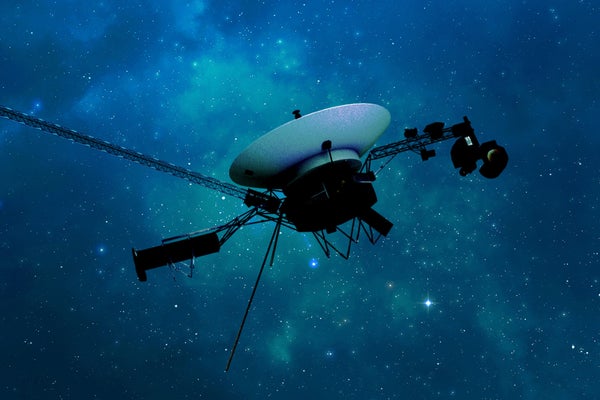
NASA’s Voyager 1 spacecraft is depicted in this artist’s concept traveling through interstellar space, or the space between stars, which it entered in 2012.
NASA/JPL-Caltech
After months of nonsensical transmissions from humanity’s most distant emissary, NASA’s iconic Voyager 1 spacecraft is finally communicating intelligibly with Earth again.
Voyager 1 launched in 1977 , zipped past Jupiter and Saturn within just a few years and has been trekking farther from our sun ever since; the craft crossed into interstellar space in 2012. But in mid-November 2023 Voyager 1’s data transmissions became garbled , sending NASA engineers on a slow quest to troubleshoot the distant spacecraft. Finally, that work has paid off, and NASA has clear information on the probe’s health and status, the agency announced on April 22.
“It’s the most serious issue we’ve had since I’ve been the project manager, and it’s scary because you lose communication with the spacecraft,” said Suzanne Dodd, Voyager project manager at NASA’s Jet Propulsion Laboratory in an interview with Scientific American when the team was still tracking down the issue.
On supporting science journalism
If you're enjoying this article, consider supporting our award-winning journalism by subscribing . By purchasing a subscription you are helping to ensure the future of impactful stories about the discoveries and ideas shaping our world today.
The Voyager 1 spacecraft is a scientific legend : It discovered that Jupiter’s moon Io, far from being a dead world like our own companion, is instead a supervolcanic world . The craft’s data suggested that Saturn’s moon Titan might have liquid on its surface. And for more than a decade, Voyager 1 has given scientists a glimpse at what space looks like beyond the influence of our sun.
Yet its long years in the harsh environment of space have done a number on the probe, which was designed to last just four years. In particular, degraded performance and low power supplies have forced NASA to turn off six of its 10 instruments, and its communication has gotten even spottier than can be explained by the fact that cosmic mechanics mean a signal takes nearly one Earth day to travel between humans and the probe.
When the latest communications glitch occurred last fall, scientists could still send signals to the distant probe, and they could tell that the spacecraft was operating. But all they got from Voyager 1 was gibberish—what NASA described in December 2023 as “a repeating pattern of ones and zeros.” The team was able to trace the issue back to a part of the spacecraft’s computer system called the flight data subsystem, or FDS, and identified that a particular chip within that system had failed.
Mission personnel couldn’t repair the chip. They were, however, able to break the code held on the failed chip into pieces they could tuck into spare corners of the FDS’s memory, according to NASA. The first such fix was transmitted to Voyager 1 on April 18. With a total distance of 30 billion miles to cross from Earth to the spacecraft and back, the team had to wait nearly two full days for a response from the probe. But on April 20 NASA got confirmation that the initial fix worked. Additional commands to rewrite the rest of the FDS system’s lost code are scheduled for the coming weeks, according to the space agency, including commands that will restore the spacecraft’s ability to send home science data.
Although, for now, Voyager 1 appears to be on the mend, NASA scientists know it won’t last forever. Sooner or later, a glitch they can’t fix will occur, or the spacecraft’s ever dwindling fuel supply will run out for good. Until then NASA is determined to get as much data as possible out of the venerable spacecraft—and its twin, Voyager 2, which experienced its own communications glitch earlier in 2023 .
After months of sending gibberish to NASA, Voyager 1 is finally making sense again
NASA's Voyager 1 probe has resumed sending usable data back to Earth after engineers fixed a computer error that caused the interstellar spacecraft to only transmit gibberish for five months.
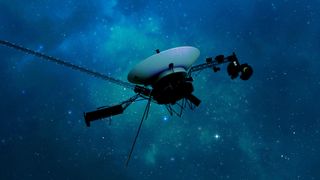
NASA's Voyager 1 probe is once again sending readable radio signals back to Earth after engineers fixed a computer glitch that caused the spacecraft to malfunction in November .
For the first time in five months, Voyager 1 is now transmitting usable data about the health and status of its onboard engineering systems back to our planet, NASA's Jet Propulsion Laboratory announced Monday (April 22). However, engineers have yet to fix the software that enables the spacecraft to return science data.
Voyager 1 is cruising through interstellar space roughly 15 billion miles (24 billion kilometers) away from Earth, which means mission control teams have to wait 22.5 hours for their commands to reach the spacecraft and another 22.5 hours for a response. Voyager 1 and its twin probe — Voyager 2, which continues to operate normally after a 2-week blackout last year — were launched almost 47 years ago and are the most distant human-made objects in existence.
Engineers first noticed something wrong with Voyager 1 on Nov. 14, 2023, when the probe suddenly began transmitting a nonsensical stream of ones and zeros instead of its usual neatly packaged science and engineering datasets.
Mission controllers could tell the spacecraft was still receiving their commands, however, indicating that its vital systems were operating normally.
Related: A mysterious 'hum' vibrates interstellar space. Voyager 1 has a recording of it.
In early March, after three months of unsuccessful tinkering , NASA engineering teams determined the issue was tied to one of Voyager 1's three onboard computer systems known as the "flight data subsystem" (FDS). The FDS is essential for packaging data harvested by the probe before they are sent to Earth, according to NASA's announcement.
Sign up for the Live Science daily newsletter now
Get the world’s most fascinating discoveries delivered straight to your inbox.
Engineers located the glitch by sending a command — or "poke" — that prompted the FDS to try new sequences of code in its software in case the issue could be resolved by skirting a corrupted section. The command triggered a signal that differed from the stream of gibberish the spacecraft had been sending back, and that engineers were able to decode .

It turned out a single chip responsible for storing a portion of the FDS memory, including some of its computer software code, had stopped working. The loss of that code meant the probe's science and engineering data were unusable, according to NASA. To get around the issue, engineers broke up the code once stored in the chip and squeezed sections of it into functioning portions of the FDS memory.
— Historic space photo of the week: Voyager 2 spies a storm on Saturn 42 years ago
— Neptune isn't as blue as you think, and these new images of the planet prove it
— Uranus and Neptune aren't made of what we thought, new study hints
The team then rewrote some of the reshuffled code so it could work as a whole again.
Engineers saved these modifications to the FDS memory on April 18. Two days later, they received a response from Voyager 1 showing that the reshuffle worked. For the first time in five months, the probe's message contained readable data, prompting celebrations at the Jet Propulsion Laboratory in Southern California.
However, solving the spacecraft's science data transmission will take further mending of the corrupted portions of the FDS software, NASA said in its announcement.

Sascha is a U.K.-based trainee staff writer at Live Science. She holds a bachelor’s degree in biology from the University of Southampton in England and a master’s degree in science communication from Imperial College London. Her work has appeared in The Guardian and the health website Zoe. Besides writing, she enjoys playing tennis, bread-making and browsing second-hand shops for hidden gems.
NASA's downed Ingenuity helicopter has a 'last gift' for humanity — but we'll have to go to Mars to get it
Object that slammed into Florida home was indeed space junk from ISS, NASA confirms
An extra moon may be orbiting Earth — and scientists think they know exactly where it came from
admin said: NASA engineers have fixed a computer error that caused the interstellar Voyager 1 probe to glitch and stop transmitting data back to Earth for five months. After months of sending gibberish to NASA, Voyager 1 is finally making sense again : Read more
- View All 1 Comment
Most Popular
- 2 NASA's downed Ingenuity helicopter has a 'last gift' for humanity — but we'll have to go to Mars to get it
- 3 Google builds an AI model that can predict future weather catastrophes
- 4 Giant, 82-foot lizard fish discovered on UK beach could be largest marine reptile ever found
- 5 What's the largest waterfall in the world?
- 2 Rare 'porcelain gallbladder' found in 100-year-old unmarked grave at Mississippi mental asylum cemetery
- 3 Scientists may have pinpointed the true origin of the Hope Diamond and other pristine gemstones
- 4 'I nearly fell out of my chair': 1,800-year-old mini portrait of Alexander the Great found in a field in Denmark
- 5 NASA reveals 'glass-smooth lake of cooling lava' on surface of Jupiter's moon Io

Greetings, Earth! NASA can understand Voyager 1 again
The 46-year-old space probe is making sense for the first time in five months after remote repairs.
By Laura Baisas | Published Apr 23, 2024 10:08 AM EDT
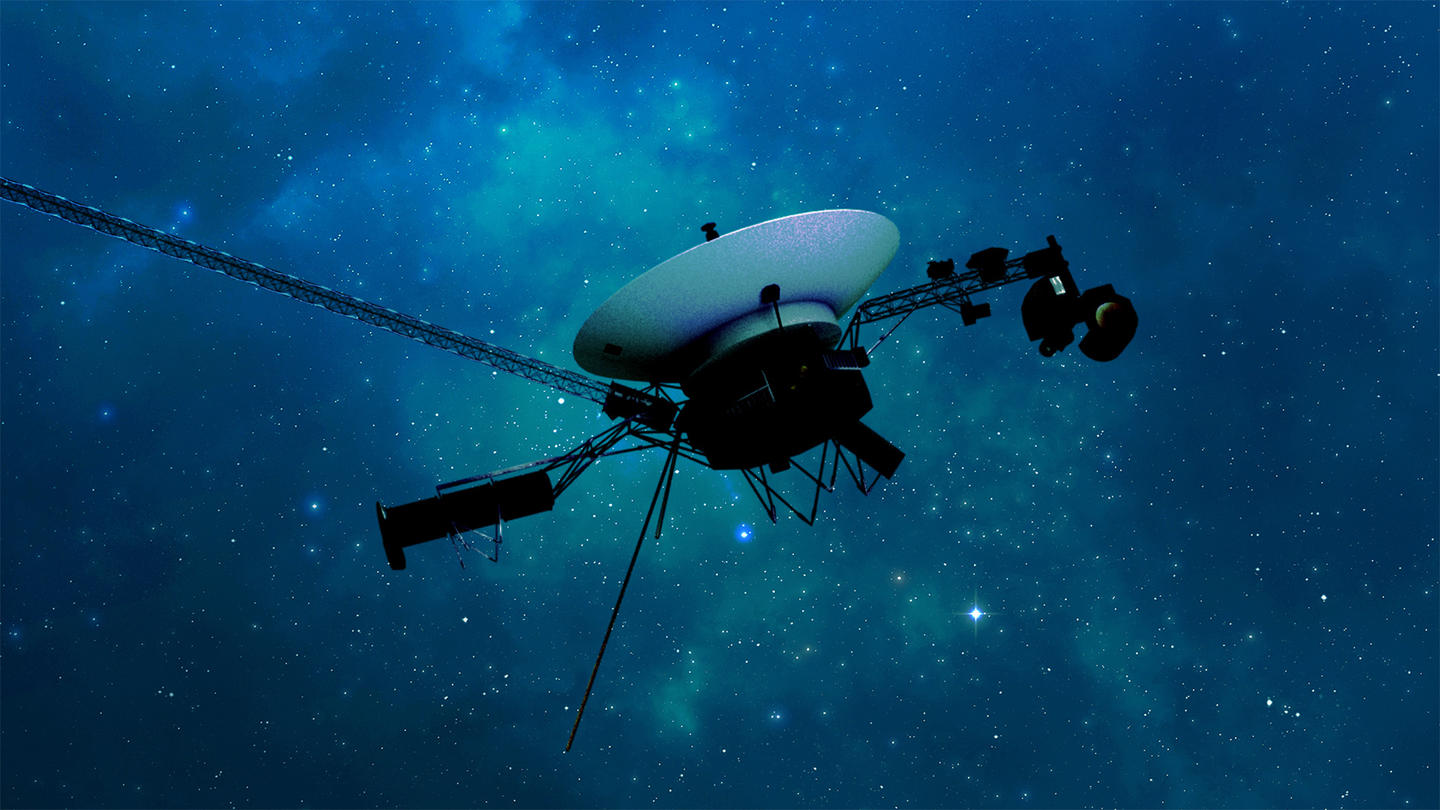
For the first time since November 2023 , NASA is receiving meaningful communication from its Voyager 1 probe . The agency has spent months troubleshooting a glitch in why the famed probe was sending home messages that looked like garbled up gibberish and not scientific data. The probe is now coherent, but according to NASA , the next step is to enable Voyager 1 to begin to return usable science information again.
[Related: Voyager 1 is sending back bad data, but NASA is on it .]
Alongside its twin Voyager 2 , these probes are the only spacecraft to ever fly in interstellar space –or the region between stars beyond the influence of the sun. Both Voyager 1 and Voyager 2 probes launched in 1977 . Their mission initially included detailed observations of Jupiter and Saturn, but it continued on exploring the outer reaches of the solar system. Voyager 1 became the first spacecraft to enter interstellar space in 2012. Voyager 2 followed Voyager 1 into interstellar space in 2018 .
On November 14, 2023, Voyager 1 stopped sending readable science and engineering data back to Earth for the first time. Mission controllers could tell that the spacecraft was still receiving their commands and otherwise operating normally, so they were not sure why it was sending back such incoherent information. In March, the Voyager engineering team at NASA’s Jet Propulsion Laboratory (JPL) confirmed that the issue was related to one of the spacecraft’s three onboard computers, called the flight data subsystem (FDS). The FDS packages science and engineering data before it’s sent to Earth so that NASA can use it.
Hi, it's me. – V1 https://t.co/jgGFBfxIOe — NASA Voyager (@NASAVoyager) April 22, 2024
The team pinpointed the code responsible for packaging the spacecraft’s engineering data. The glitch was only on one single chip representing around 3 percent of the FDS memory, according to Space . They were unable to repair the chip. On April 18 , JPL engineers migrated the code to other portions of the FDS memory. This required splitting the code up into several sections to store them at multiple locations in the FDS. The code was adjusted to work from multiple locations as one cohesive process and references to its new directories were updated.
“When the mission flight team heard back from the spacecraft on April 20, they saw that the modification worked: For the first time in five months, they have been able to check the health and status of the spacecraft,” NASA wrote in an update on April 22 .
[Related: When Voyager 1 goes dark, what comes next? ]
As of now, the usable data returned so far relates to how the spacecraft’s engineering systems are working. The team plans more software repair work in the next several weeks so that Voyager 1 can send valuable science data about the outer reaches of the solar system that is readable once again. As of now, Voyager 2 is still operating normally.

Laura is a science news writer, covering a wide variety of subjects, but she is particularly fascinated by all things aquatic, paleontology, nanotechnology, and exploring how science influences daily life. Laura is a proud former resident of the New Jersey shore, a competitive swimmer, and a fierce defender of the Oxford comma.
Like science, tech, and DIY projects?
Sign up to receive Popular Science's emails and get the highlights.

Interstellar Messengers
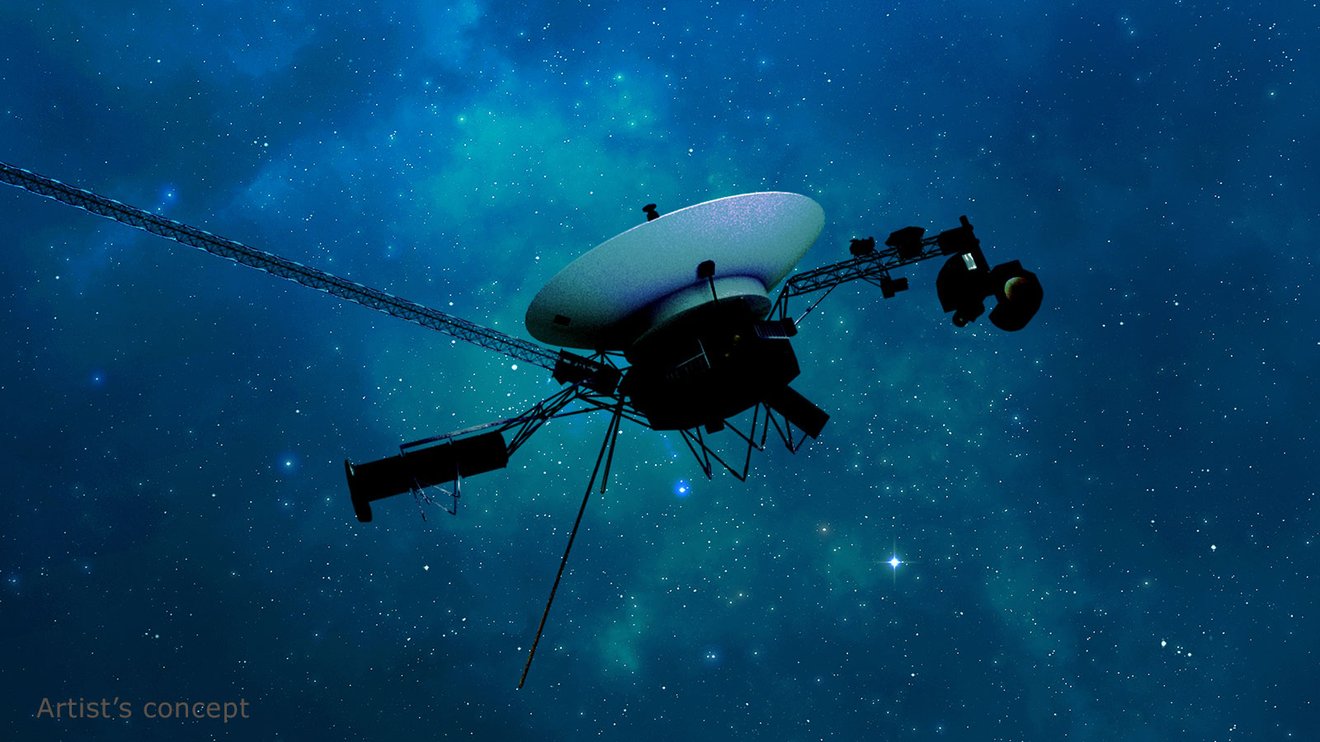
Voyager 1 and its twin Voyager 2 are the only spacecraft ever to operate outside the heliosphere, the protective bubble of particles and magnetic fields generated by the Sun. Voyager 1 reached the interstellar boundary in 2012, while Voyager 2 (traveling slower and in a different direction than its twin) reached it in 2018.
Mission Type
Science Targets
Latest News
NASA’s Voyager Team Focuses on Software Patch, Thrusters
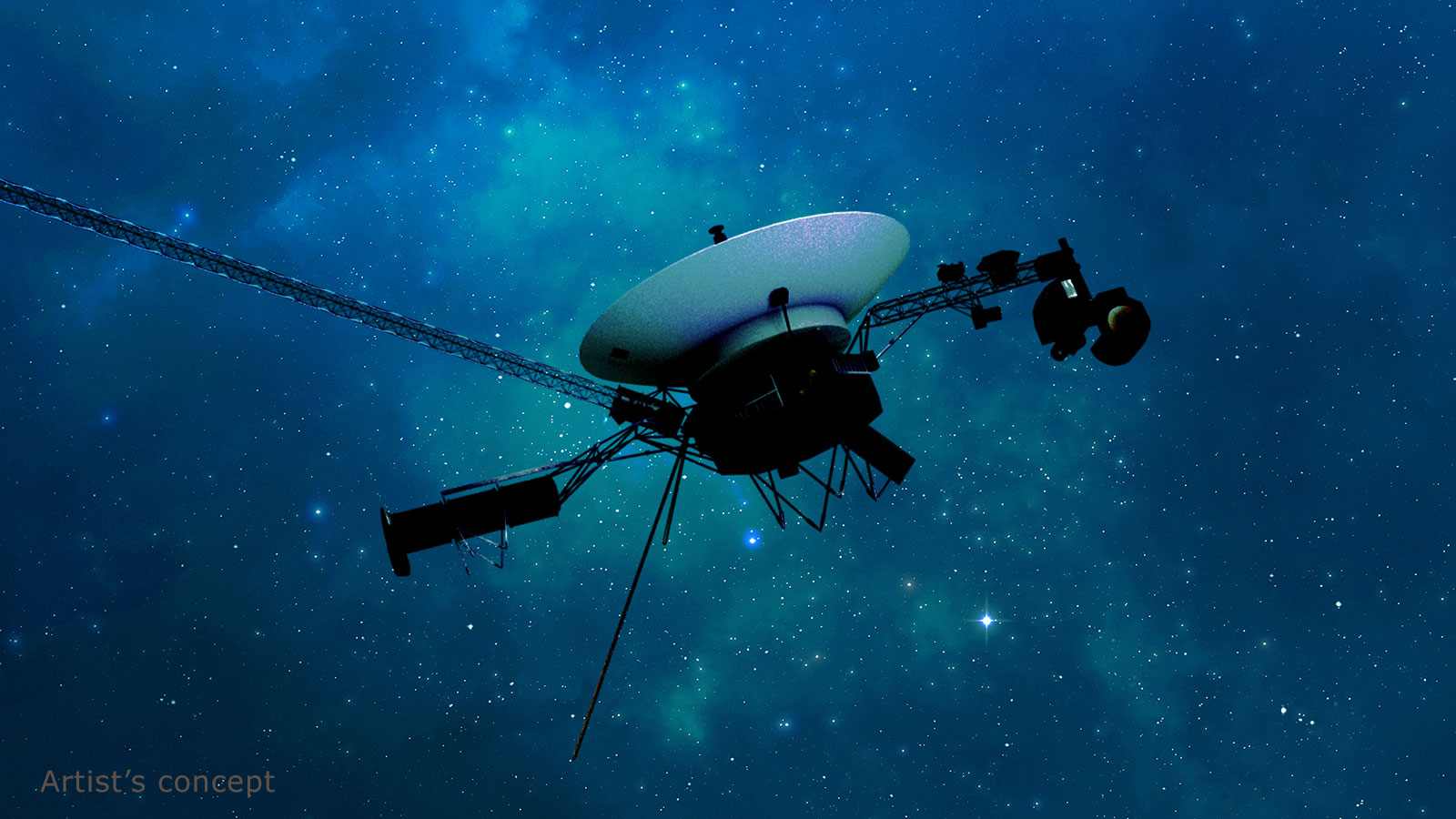
NASA’s Voyager Will Do More Science With New Power Strategy
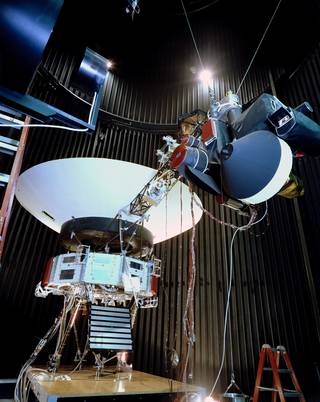
Edward Stone Retires After 50 Years as NASA Voyager’s Project Scientist
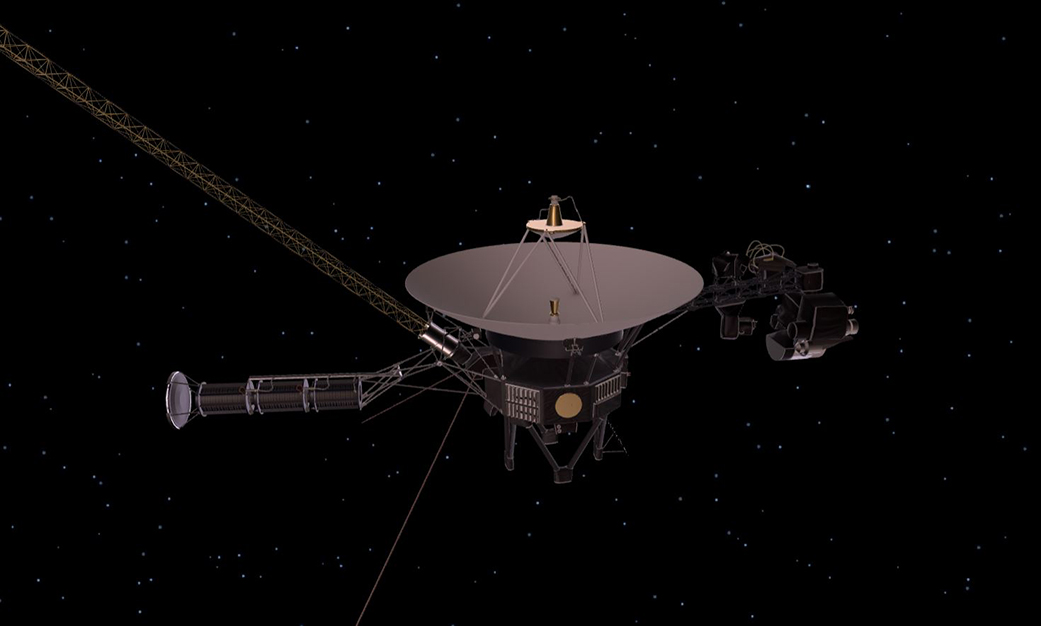
Engineers Solve Data Glitch on NASA’s Voyager 1
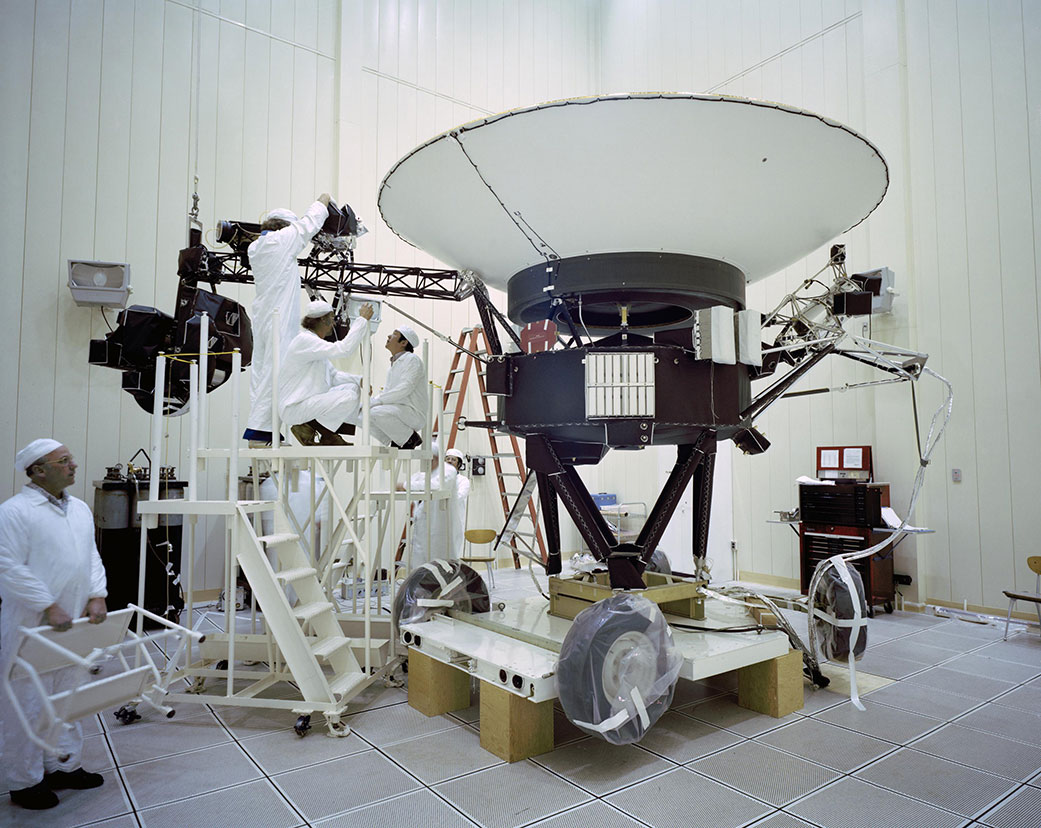
Voyager, NASA’s Longest-Lived Mission, Logs 45 Years in Space
The Interstellar Mission
After completing the first in-depth reconnaissance of the outer planets, the twin Voyagers are on a new mission to chart the edge of interstellar space.
The Golden Record
The contents of the golden record were selected for NASA by a committee led by Carl Sagan of Cornell University.
The Spacecraft
The twin Voyagers are escaping our solar system in different directions at more than 3 astronomical units (AU) a year.
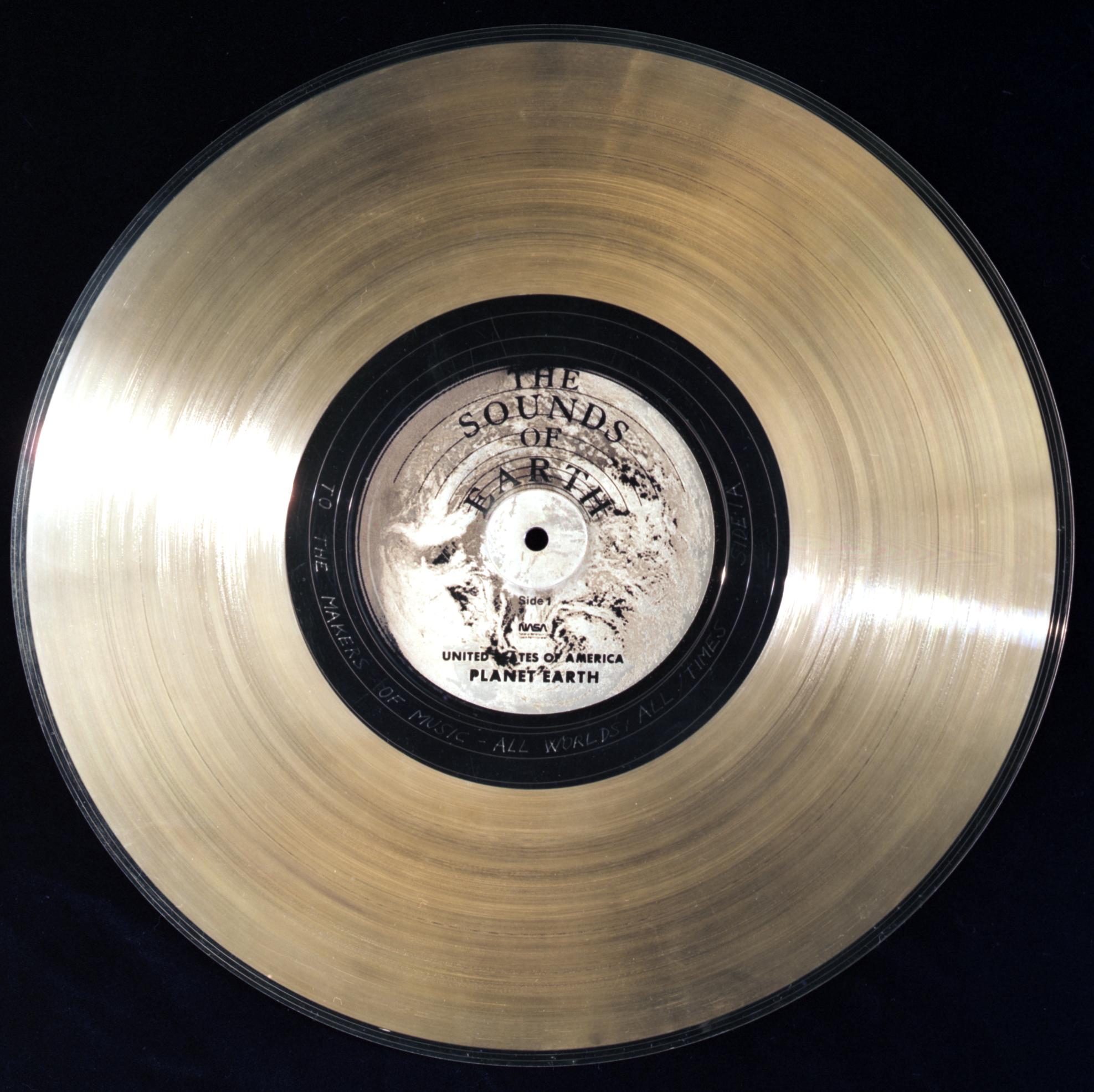
The Pale Blue Dot
The behind-the-scenes story of the making of Voyager 1's iconic image of Earth as "a mote of dust suspended in a sunbeam."
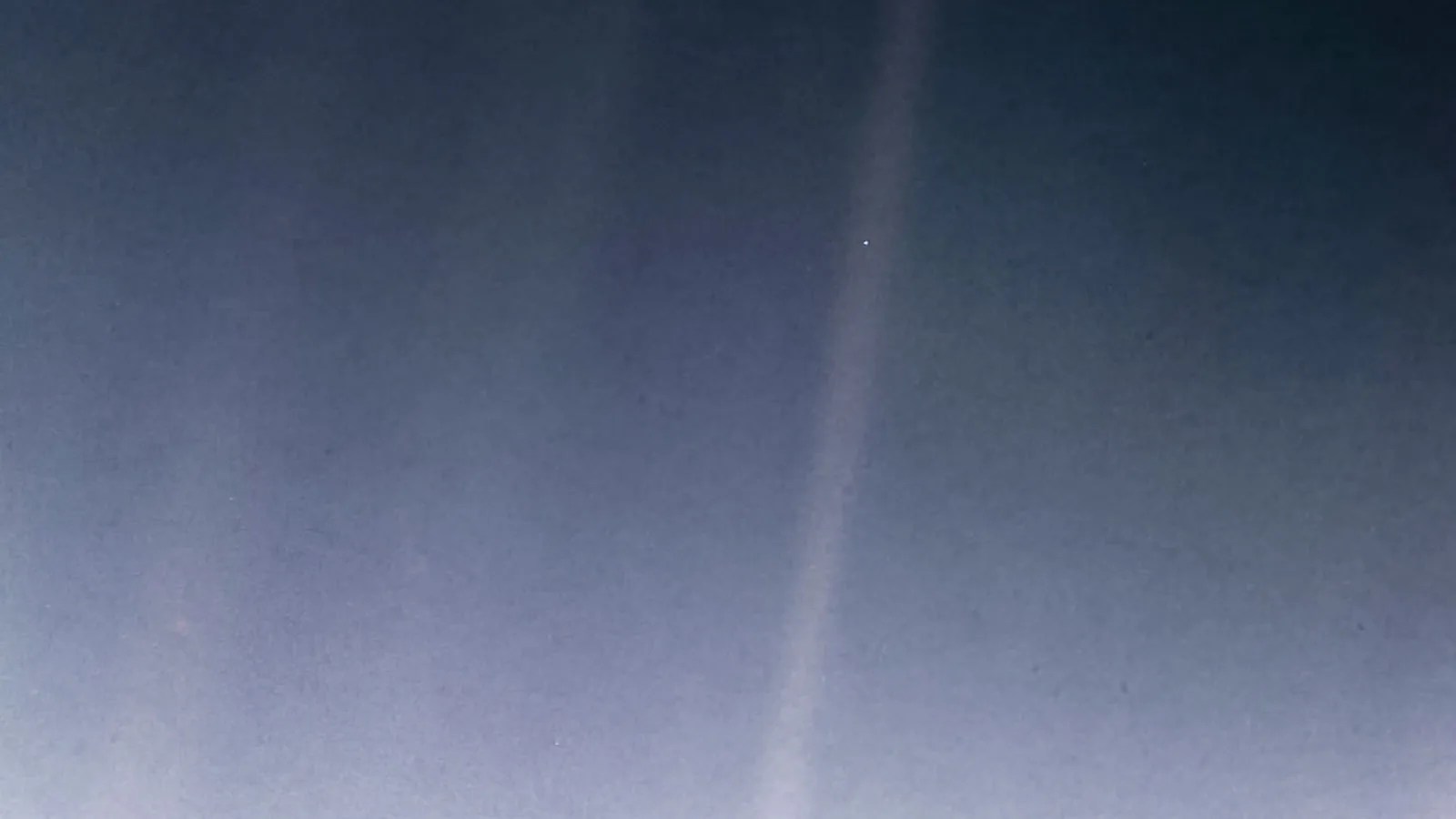
Discover More Topics From NASA

Our Solar System

Heliosphere
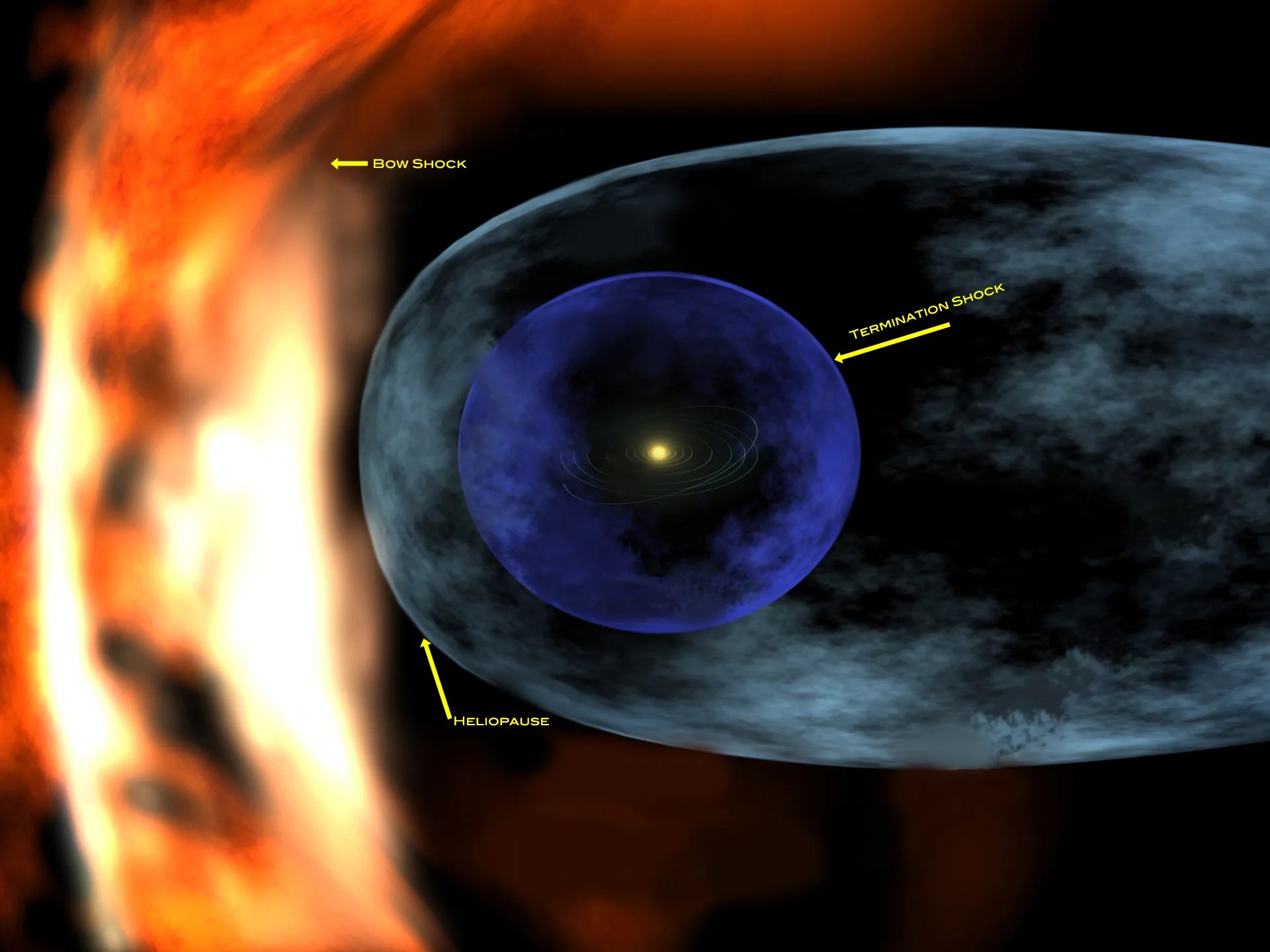
Voyager 1 Now Most Distant Human-Made Object in Space

In a dark, cold, vacant neighborhood near the very edge of our solar system, the Voyager 1 spacecraft is set to break another record and become the explorer that has traveled farthest from home.
At approximately 2:10 p.m. Pacific time on February 17, 1998, Voyager 1, launched more than two decades ago, will cruise beyond the Pioneer 10 spacecraft and become the most distant human-created object in space at 10.4 billion kilometers (6.5 billion miles.) The two are headed in almost opposite directions away from the Sun. As with other spacecraft traveling past the orbit of Mars, both Voyager and Pioneer derive their electrical power from onboard nuclear batteries.
"For 25 years, the Pioneer 10 spacecraft led the way, pressing the frontiers of exploration, and now the baton is being passed from Pioneer 10 to Voyager 1 to continue exploring where no one has gone before," said Dr. Edward C. Stone, Voyager project scientist and director of NASA's Jet Propulsion Laboratory.
"At almost 70 times farther from the Sun than the Earth, Voyager 1 is at the very edge of the Solar System. The Sun there is only 1/5,000th as bright as here on Earth -- so it is extremely cold and there is very little solar energy to keep the spacecraft warm or to provide electrical power. The reason we can continue to operate at such great distances from the Sun is because we have radioisotope thermal electric generators (RTGs) on the spacecraft that create electricity and keep the spacecraft operating," Stone said. "The fact that the spacecraft is still returning data is a remarkable technical achievement."
Voyager 1 was launched from Cape Canaveral on September 5, 1977. The spacecraft encountered Jupiter on March 5, 1979, and Saturn on November 12, 1980.
Then, because its trajectory was designed to fly close to Saturn's large moon Titan, Voyager 1's path was bent northward by Saturn's gravity, sending the spacecraft out of the ecliptic plane - the plane in which all the planets except Pluto orbit the Sun.
Launched on March 2, 1972, the Pioneer 10 mission officially ended on March 31, 1997. However NASA's Ames Research Center, Moffet Field, CA, intermittently receives science data from Pioneer as part of a training program for flight controllers of the Lunar Prospector spacecraft now orbiting the Moon.
"The Voyager mission today presents an unequaled technical challenge. The spacecraft are now so far from home that it takes nine hours and 36 minutes for a radio signal traveling at the speed of light to reach Earth,"said Ed B. Massey, project manager for the Voyager Interstellar Mission. "That signal, produced by a 20 watt radio transmitter, is so faint that the amount of power reaching our antennas is 20 billion times smaller than the power of a digital watch battery,"
Having completed their planetary explorations, Voyager 1 and its twin, Voyager 2, are studying the environment of space in the outer solar system. Although beyond the orbits of all the planets, the spacecraft still are well within the boundary of the Sun's magnetic field, called the heliosphere. Science instruments on both spacecraft sense signals that scientists believe are coming from the outermost edge of the heliosphere, known as the heliopause.
The heliosphere results from the Sun emitting a steady flow of electrically charged particles called the solar wind. As the solar wind expands supersonically into space in all directions, it creates a magnetized bubble -- the heliosphere -- around the Sun. Eventually, the solar wind encounters the electrically charged particles and magnetic field in the interstellar gas. In this zone the solar wind abruptly slows down from supersonic to subsonic speed, creating a termination shock. Before the spacecraft travel beyond the heliopause into interstellar space, they will pass through this termination shock.
"The data coming back from Voyager now suggest that we may pass through the termination shock in the next three to five years," Stone said. "If that's the case, then one would expect that within 10 years or so we would actually be very close to penetrating the heliopause itself and entering into interstellar space for the first time."
Reaching the termination shock and heliopause will be major milestones for the mission because no spacecraft have been there before and the Voyagers will gather the first direct evidence of their structure. Encountering the termination shock and heliopause has been a long-sought goal for many space physicists, and exactly where these two boundaries are located and what they are like still remains a mystery.
Science data are returned to Earth in real-time to the 34- meter Deep Space Network (DSN) antennas located in California, Australia and Spain. Both spacecraft have enough electricity and attitude control propellant to continue operating until about 2020, when electrical power produced by the RTGs will no longer support science instrument operation. At that time, Voyager 1 will be almost 150 times farther from the Sun than the Earth -- more than 20 billion kilometers (almost 14 billion miles) away.
On Feb. 17, Voyager 1 will be 10.4 billion kilometers (6.5 billion miles) from Earth and is departing the Solar System at a speed of 17.4 kilometers per second (39,000 miles per hour). At the same time, Voyager 2 will be 8.1 billion kilometers (5.1 billion miles) from Earth and is departing the solar system at a speed of 15.9 kilometers per second (35,000 miles per hour).
JPL, a division of the California Institute of Technology, manages the Voyager Interstellar Mission for NASA's Office of Space Science, Washington, D. C.

NASA's Voyager 1 was transmitting gibberish for months but now it's making sense again
An artist’s concept of NASA’s Voyager 1 spacecraft.
The Voyager 1 spacecraft returned usable data for the first time in more than five months, giving hope for the 46-year-old mission to finally be able to resume its normal operations.
NASA’s favorite interstellar probe transmitted data about the health and status of its onboard engineering systems to mission control on Saturday, the space agency announced . That’s great news for the mission, and the next step is hopefully for Voyager 1 to begin returning science data again.
The last time Voyager 1 sent readable science and engineering data back to Earth was on November 14, 2023. Afterwards, the spacecraft was receiving commands, but talking back to Earth in unusable gibberish . The storied spacecraft is exploring the outermost edge of the Sun’s domain, combining its observations with data from newer missions to get a better understanding of how the heliosphere interacts with interstellar space.
In March, the team at NASA’s Jet Propulsion Lab (JPL) pinpointed the cause behind Voyager 1's nonsensical data : a single chip responsible for storing part of the affected portion of the spacecraft’s flight data system (FDS) memory.
FDS collects data from Voyager’s science instruments, as well as engineering data about the health of the spacecraft, and combines them into a single package that’s transmitted to Earth in binary code. Since the glitch, however, the mission has been sending data in a repeating pattern of ones and zeroes.
Voyager 1 is 15.14 billion miles away, which makes repairing it that much more complicated. The engineers at JPL knew that they couldn’t fix the chip, but they could try to place the affected code elsewhere in the FDS memory.
Members of the Voyager flight team celebrate after receiving the signal back from Voyager 1 on April 20.
Instead of selecting a single location to hold all of the affected code, the team came up with a plan to divide it into sections and store those sections in different places in the FDS. On April 18, the mission team singled out the code responsible for packaging the spacecraft’s engineering data and sent it to its new location.
Two days later, the engineers heard back from the Voyager 1 spacecraft. It takes around 22.5 hours to send a radio signal to the spacecraft, and another 22.5 hours to receive one back.
Over the coming weeks, the Voyager 1 team will relocate the other affected portions of the software to different parts of the FDS memory, including portions related to the mission’s science data.
Voyager 1 launched in 1977, less than a month after its twin probe, Voyager 2, began its own journey to space. The probe ventured into interstellar space in August 2012, becoming the first spacecraft to leave the heliosphere. The twin spacecraft are the longest-running missions in history, and aside from a few communication glitches, the pair are doing pretty well for their age.
A version of this article originally appeared on Gizmodo .
For the latest news, Facebook , Twitter and Instagram .
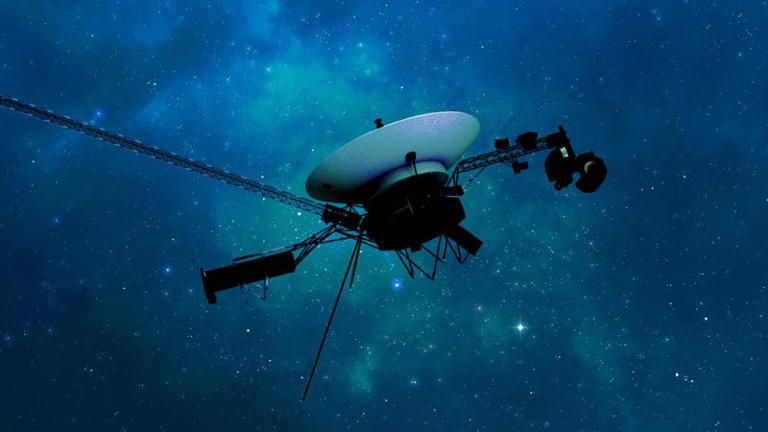

IMAGES
VIDEO
COMMENTS
Both Voyager 1 and Voyager 2 have reached "Interstellar space" and each continue their unique journey through the Universe. In the NASA Eyes on the Solar System app, you can see the real spacecraft trajectories of the Voyagers, which are updated every five minutes. Distance and velocities are updated in real-time.
Voyager 2 Present Position. This simulated view of the solar system allows you to explore the planets, moons, asteroids, comets, and spacecraft exploring our solar system. You can also fast-forward and rewind in real-time. NASA/JPL-Caltech.
NASA is now receiving data about the health and status of Voyager 1's engineering systems. The next step is to get the spacecraft to start sending science data again.
On Saturday, April 5, Voyager 1 finally "phoned home" and updated its NASA operating team about its health. The interstellar explorer is back in touch after five months of sending back nonsense data.
Voyager 1 stopped sending readable science and engineering data back to Earth on Nov. 14, 2023, even though mission controllers could tell the spacecraft was still receiving their commands and otherwise operating normally. In March, the Voyager engineering team at NASA's Jet Propulsion Laboratory in Southern California confirmed that the ...
Voyager 1 is now at the outer edge of our solar system, in an area called the heliosheath, the zone where the sun's influence wanes. This region is the outer layer of the 'bubble' surrounding the sun, and no one knows how big this bubble actually is. Voyager 1 is literally venturing into the great unknown and is approaching interstellar space.
This tells how long it would take a radio signal transmitted right now, traveling at the speed of light, to get either from Earth to Voyager 2 or from Voyager 2 to Earth. Voyager 2. One-Way Light Time (hh:mm:ss) ... NASA's Voyager 1 spacecraft has been sending a steady radio signal to Earth, but the signal does not contain usable data.
NASA. Sep 12, 2013. RELEASE 13-280. NASA's Voyager 1 spacecraft officially is the first human-made object to venture into interstellar space. The 36-year-old probe is about 12 billion miles (19 billion kilometers) from our sun. New and unexpected data indicate Voyager 1 has been traveling for about one year through plasma, or ionized gas ...
Although, for now, Voyager 1 appears to be on the mend, NASA scientists know it won't last forever. Sooner or later, a glitch they can't fix will occur, or the spacecraft's ever dwindling ...
For the first time in five months, Voyager 1 is now transmitting usable data about the health and status of its onboard engineering systems back to our planet, NASA's Jet Propulsion Laboratory ...
Sitemap Submit Feedback. PASADENA, Calif. — NASA's Voyager 1 spacecraft has entered a new region at the far reaches of our solar system that scientists feel is the final area the spacecraft has to cross before reaching interstellar space. Scientists refer to this new region as a magnetic highway for charged particles because our sun's ...
NASA. Jun 06, 2013. RELEASE 12-416. WASHINGTON - NASA's Voyager 1 spacecraft has entered a new region at the far reaches of our solar system that scientists feel is the final area the spacecraft has to cross before reaching interstellar space. Scientists refer to this new region as a magnetic highway for charged particles because our sun ...
At approximately 2:10 p.m. Pacific time on February 17, 1998, Voyager 1, launched more than two decades ago, will cruise beyond the Pioneer 10 spacecraft and become the most distant human-created object in space at 10.4 billion kilometers (6.5 billion miles.) The two are headed in almost opposite directions away from the Sun.
This is a real-time indicator of Voyager 1's distance from Earth in astronomical units (AU) and either miles (mi) or kilometers (km). Note: Because Earth moves around the sun faster than Voyager 1 is speeding away from the inner solar system, the distance between Earth and the spacecraft actually decreases at certain times of year.
The probe is now coherent, but according to NASA, the next step is to enable Voyager 1 to begin to return usable science information again. [Related: Voyager 1 is sending back bad data, but NASA ...
About the mission. Voyager 1 reached interstellar space in August 2012 and is the most distant human-made object in existence. Launched just shortly after its twin spacecraft, Voyager 2, in 1977, Voyager 1 explored the Jovian and Saturnian systems discovering new moons, active volcanoes and a wealth of data about the outer solar system.
Jet Propulsion Laboratory, Pasadena, Calif. 818-354-0724. [email protected]. Dwayne Brown. 202-358-1726. [email protected]. 2012-381. NASA's Voyager 1 spacecraft has entered a new region at the far reaches of our solar system that scientists feel is the final area the spacecraft has to cross before reaching interstellar space.
Mission Overview. The twin Voyager 1 and 2 spacecraft are exploring where nothing from Earth has flown before. Continuing on their more-than-40-year journey since their 1977 launches, they each are much farther away from Earth and the sun than Pluto. In August 2012, Voyager 1 made the historic entry into interstellar space, the region between ...
Voyager 1 and its twin Voyager 2 are the only spacecraft ever to operate outside the heliosphere, the protective bubble of particles and magnetic fields generated by the Sun. Voyager 1 reached the interstellar boundary in 2012, while Voyager 2 (traveling slower and in a different direction than its twin) reached it in 2018.
At approximately 2:10 p.m. Pacific time on February 17, 1998, Voyager 1, launched more than two decades ago, will cruise beyond the Pioneer 10 spacecraft and become the most distant human-created object in space at 10.4 billion kilometers (6.5 billion miles.) The two are headed in almost opposite directions away from the Sun.
NASA Voyager Status Update on Voyager 1 Location. Artist concept of NASA's Voyager spacecraft. Image credit: NASA/JPL-Caltech › larger image. "The Voyager team is aware of reports today that NASA's Voyager 1 has left the solar system," said Edward Stone, Voyager project scientist based at the California Institute of Technology, Pasadena, Calif.
An artist's concept of NASA's Voyager 1 spacecraft. The Voyager 1 spacecraft returned usable data for the first time in more than five months, giving hope for the 46-year-old mission to ...